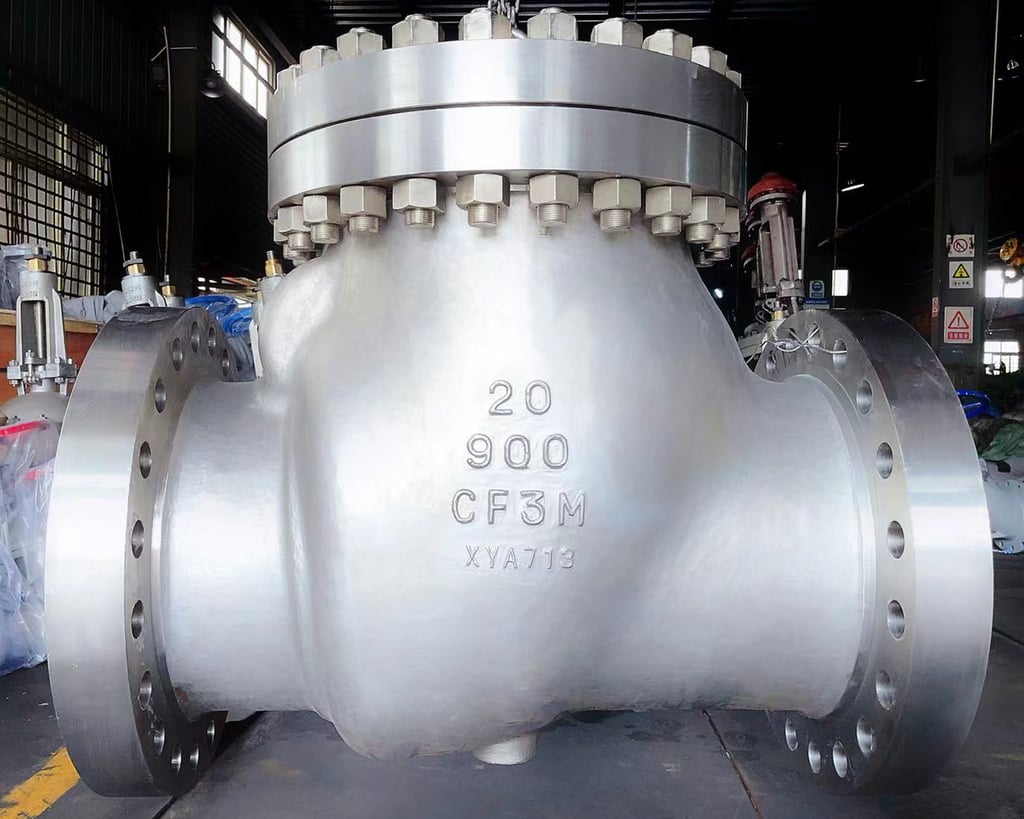Common Valve Problems and How to Troubleshoot Them
7/11/20244 min read


Introduction to Valve Problems
Valves are critical components in a wide range of systems, including plumbing, industrial processes, and machinery. They serve as control devices that regulate the flow of fluids or gases by opening, closing, or partially obstructing passageways. The reliability and functionality of these systems often hinge on the proper operation of various types of valves, such as gate valves, ball valves, and check valves.
Gate valves are primarily used to start or stop the flow of liquid, making them ideal for applications where a straight-line flow of fluid and minimum restriction is desired. Ball valves, on the other hand, offer a good seal and can be operated with a simple quarter turn, making them highly efficient and easy to use. Check valves are designed to prevent the backflow of fluids, ensuring that flow occurs in only one direction.
Despite their essential role, valves are not immune to issues. Common valve problems include leaks, corrosion, wear and tear, and blockages. Even a minor issue in a valve can lead to significant operational disruptions, causing downtime and potentially leading to costly repairs or replacements. For instance, a leaking gate valve in a plumbing system can result in water wastage and increased utility bills. Similarly, a malfunctioning ball valve in an industrial setting can disrupt production processes, impacting overall efficiency and productivity.
Given the critical nature of valves, regular maintenance and timely troubleshooting are imperative to ensure their proper functioning. Regular inspections can help detect early signs of wear or damage, allowing for preventive measures to be taken before the issues escalate. Troubleshooting typically involves identifying the root cause of the problem and implementing the appropriate corrective actions to restore the valve to its optimal condition.
In essence, understanding the types and functions of valves, along with recognizing common valve problems, is the first step in maintaining system integrity and ensuring uninterrupted operations across various applications.
Identifying Common Valve Problems
Valves are crucial components in various systems, ensuring that fluids flow correctly and efficiently. However, they are susceptible to several common issues. One of the most frequent problems is leaks, often caused by worn-out seals or gaskets. Leaks can be identified through visual inspections, where you might notice fluid escaping around the valve. Additionally, you may detect a drop in system pressure or fluid levels, indicating a potential leak. If left unaddressed, leaks can lead to significant system inefficiencies and even damage other components.
Another prevalent issue is sticking or jammed valves, which typically result from corrosion or debris accumulation. This problem can be recognized by difficulty in operating the valve or noticeable resistance during manual operation. A stuck valve can severely compromise system performance, potentially leading to complete system failure if critical flow paths are obstructed.
Valve noise is also a common concern, often indicating cavitation or water hammer. Cavitation occurs when vapor bubbles form and collapse within the valve, creating a distinct noise similar to gravel or marbles being shaken. Water hammer, on the other hand, produces a sharp banging sound due to sudden changes in fluid velocity. Both conditions can be detected audibly and may cause substantial wear and tear on the valve and connected piping if not promptly addressed.
Recognizing these common valve problems involves regular visual inspections, listening for unusual sounds, and monitoring system performance metrics. For example, a sudden increase in operating pressure might indicate a sticking valve, while fluctuating flow rates could signal a leak. By identifying these symptoms early, you can mitigate potential damage and maintain system efficiency.
Troubleshooting and Solutions
When facing common valve problems, a systematic approach to troubleshooting and solutions can help mitigate issues effectively. Here are the essential steps and practical solutions for diagnosing and addressing typical valve problems:
Checking for Leaks
The first step in troubleshooting valve issues is to check for leaks. Inspect the valve and surrounding system for any visible signs of fluid leakage. Leaks can often be identified by wet spots, stains, or drops of fluid. If a leak is found, tightening the valve seals or replacing worn-out gaskets can often resolve the issue. Ensure that all connections are secure and free from corrosion or damage.
Testing Valve Operation
Proper valve operation is crucial for system performance. Test the valve by opening and closing it to ensure it moves smoothly without resistance. If the valve is difficult to operate or is stuck, it may need to be cleaned or lubricated. Use a suitable lubricant that is compatible with the valve material to prevent damage and ensure smooth operation.
Inspecting Internal Components
Internal components of a valve, such as the stem, seat, and ball or disc, can wear out over time. Disassemble the valve carefully to inspect these parts for wear and tear. If any components are damaged, replacing them with new ones can restore the valve's functionality. Ensure all internal parts are clean and free from debris before reassembling the valve.
Addressing Surrounding System Issues
Sometimes, valve problems can be due to issues in the surrounding system. Inspect the pipes, fittings, and other components connected to the valve for any signs of blockage, pressure build-up, or misalignment. Resolving these issues can often rectify the valve problem. Regular maintenance of the entire system can prevent such issues from arising.
Safety Tips and Best Practices
When performing valve repairs and maintenance, always follow safety protocols. Depressurize the system and drain any fluids before working on the valve. Wear appropriate personal protective equipment (PPE) such as gloves and safety goggles. Keep the work area clean and organized to avoid accidents.
When to Call a Professional
While many valve issues can be resolved with basic troubleshooting and maintenance, some problems may require professional assistance. If the valve problem persists despite your efforts or if you are unsure about performing the repairs, it is best to call a qualified technician. Professionals have the expertise and tools to diagnose and fix complex valve issues, ensuring the system operates safely and efficiently.
Zhongyue High Quality Valve Manufacturer
The products are exported to the United States, Europe, the Middle East, Southeast Asia, Russia and other countries and regions, reliable quality and reasonable price. Reliable quality and reasonable price are the basis of our continuous development.
Contact
Get in touch Please leave the questions you need to consult, later we will have a professional technical team to contact you.
Email: sales@hizhongyue.com
Tel: +86 0577-28828932
WhatsApp/WeChat: +86 15658617888
© 2024. zhongyue valve llc.All rights reserved.




